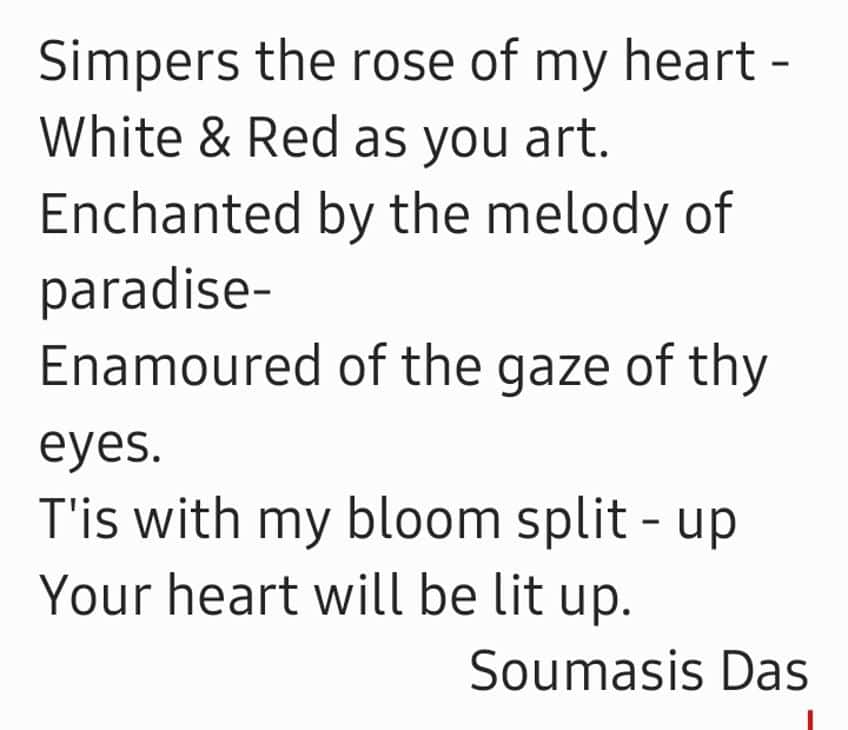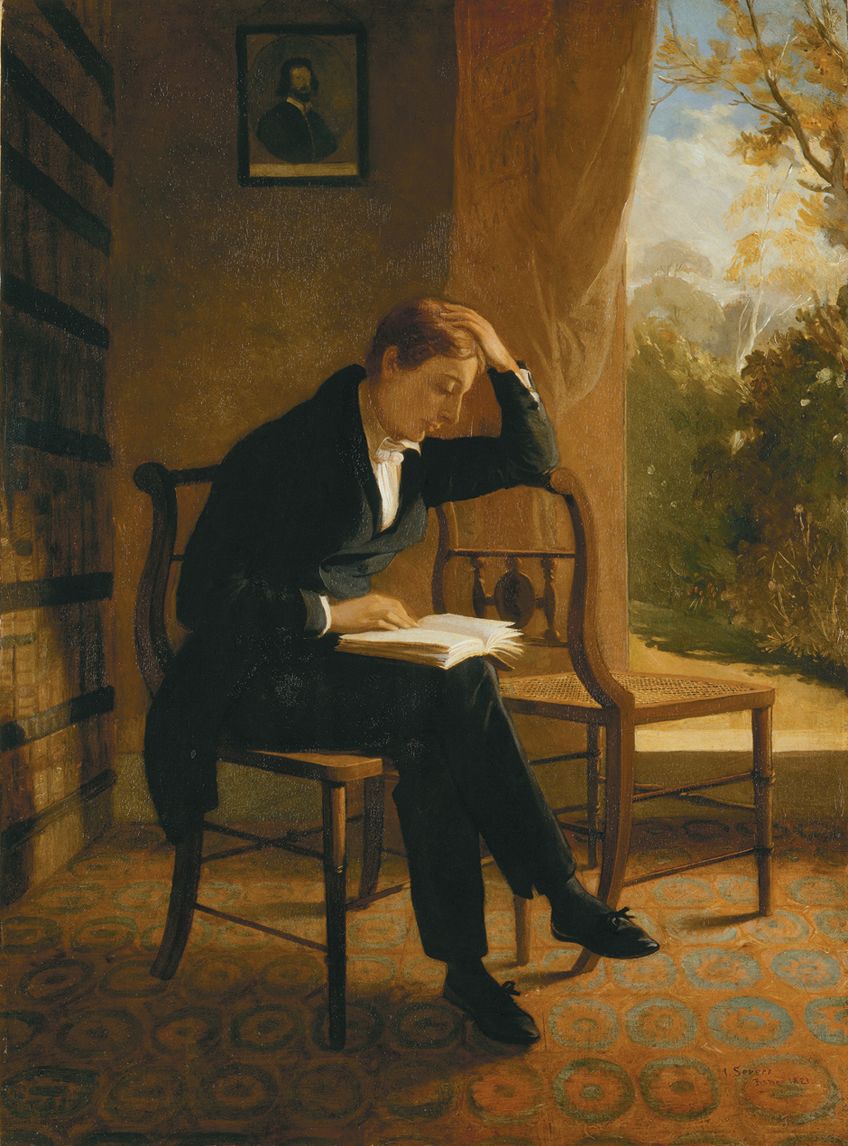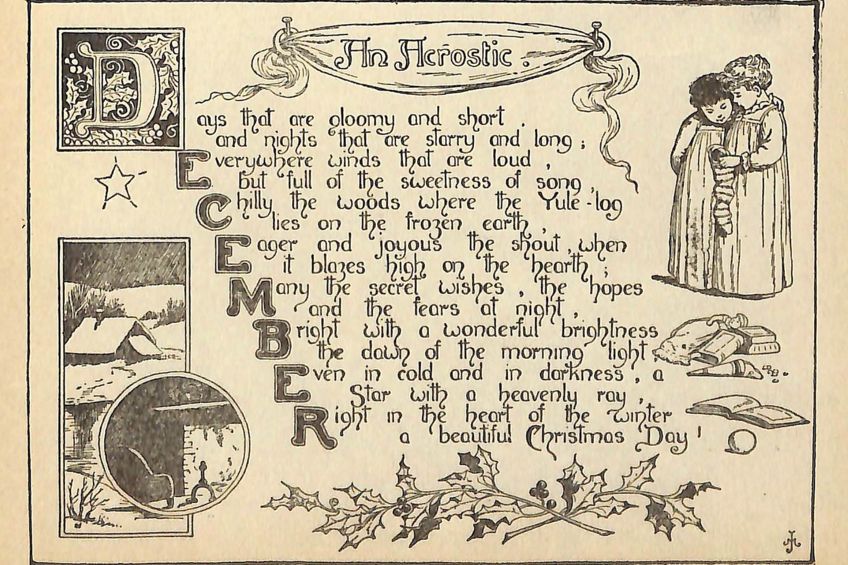How to Write an Acrostic Poem – An Easy Guide for Beginners
There are many fun varieties of poetry out there, and one that is often seen in spaces for children is the acrostic poem. Today, we are going to look at this type of poetry with a particular eye toward guiding you on how to write an acrostic poem. We will discuss a brief history of the concept, some of its principal features, the tangible uses of this formal method of poetic composition, and some of the more notable acrostic poem examples. So, if you wish to learn more about acrostic poetry, and maybe even how to write an acrostic poem, then you have come to the right place! Get started on the first section of this article if you have an inquisitive nature when it comes to learning about the different poetic varieties out there!
Table of Contents
How to Write an Acrostic Poem
If your goal is to learn how to write an acrostic poem, it is generally best if you commit to learning something about the form itself before attempting to do so. So, what is an acrostic poem? That’s a pretty good place to start! We are going to have a look at various aspects of the acrostic poem to help you learn how to write an acrostic poem. So, each of these discussions will, for the most part, be geared towards helping you to understand this poetic form and to be able to write them for yourself.

Something that is rather great about acrostic poems is that if you wish to try your hand at them, they can be a very entertaining poetic variety. There’s something inherently entertaining about a poem where the first letter of every line spells out a word when read vertically. However, before we jump straight into acrostic poetry as a whole and look at all the ways that we can help you on your journey to write them, we are first going to look at a summary.
Summary of Acrostic Poetry
When it comes to acrostic poetry, it is a rather easy thing to understand. This type of poetry has been around for a very long time and it’s also a type of poetry that most of us know even if we are not familiar with the term. A word like “acrostic” sounds very fancy, but this summary will show that it really isn’t fancy at all:
- Acrostic poetry involves spelling out a word with the first word of each line. The basic idea behind the acrostic poem is that when the first word of each line is read vertically, it spells out a word. This word is generally related to the overall meaning of the poem as a whole.
- Acrostic poetry has been around for several thousand years. The ancient Greeks made use of acrostic poetry, and there were many others that also used this form. For instance, it was very popular among German and English writers during the medieval period.
- Acrostic poetry is great for kids. This type of poetry has found a good home in many pieces of educational and entertainment materials for children. The fact that an acrostic poem gives the reader an additional thing to read in a vertical capacity means that there can be an added layer of “fun” to reading these kinds of poems.
This has been a little summary of acrostic poetry, but it is far from a truly comprehensive look at this poetic form. There is a lot more that can be done with regard to this particular type of poetry, and if you do want to learn more about it and, more specifically, how to write an acrostic poem, then you should probably keep reading.
There is significantly more that you can learn, after all.
The History of Acrostic Poetry
Many types of poetry have been around for thousands of years, and acrostic poetry is no different. While you may not need to know anything about the history of this form to learn how to write an acrostic poem, it should still be an interesting thing. These poems were used in ancient Greece and Rome, and they would become popular among them. However, their popularity persisted over the years, and during the Middle Ages period in Europe, they were adopted by many English and German writers. However, during this period, and the later Renaissance period, they were often far more serious in their use. For instance, many early poets actually signed their names this way.

They used an acrostic presentation to ensure that anyone reading their poetry would know who wrote it. The acrostic poem is not seen as a serious poetic form in the present day, or at least it is not commonly seen as particularly serious. It can still be an intellectual poetic variety, but it is often used in children’s poetry in the contemporary era. This form of poetry has persisted in its popularity over the years though, and there are still many acrostic poems that are being produced well into the present day.
The Characteristics of Acrostic Poetry
When it comes to how to write an acrostic poem, it is usually best to first understand some of the basic ideas behind this poetic variety. We have already mentioned how the word or phrase that is read vertically needs to be present for it to be an acrostic poem, and this immediately ties an acrostic poem to a specific language. Each language generally uses different spellings for different words, and so most acrostic poems cannot be translated without losing the vertical word or phrase along the first letters of every line. However, while this may be a fundamental limitation of the acrostic poem in that translation is difficult, if not impossible, but most acrostic poems do not have requirements for line length, meter, or rhyme.
One can incorporate these things if desired, but they do usually make it far harder to write an acrostic poem if they have been adopted.
There is also no restriction on how many lines are in an acrostic poem as the word or phrase, or even full sentence, that is written out could be of any possible length. These are some of the primary attributes of the acrostic poem, and there is also a fundamental creativity inherent in this form as forcing language to conform in such a way that a word or phrase can be spelled out is a difficult thing to do. It is especially a difficult thing to do if you decide to impose additional restrictions on yourself, but these are the things that you need to keep in mind if you want to learn how to write an acrostic poem.
The Use of Acrostic Poetry for Children
One of the best uses of acrostic poetry in the present day is that it can be used as a way of producing entertaining children’s poetry. One of the central reasons for this is likely because the word that is spelled out in an acrostic poem is almost like a secret code that a child could take note of, and, for that reason, they are immediately entertaining to read and enjoy.

Other than this, they can also be used as mnemonic devices to help a child remember something. If they can learn a quick and fun poem, the first letter of each of the lines of that poem can spell something out that is, in some way, educational. In addition, teaching kids to write an acrostic poem can force them to think creatively about how they might arrange the words of each line to ensure that their vertical words can still be read. Acrostic poems are, quite simply, a fun type of poetry. This is often reason enough for many kids to enjoy writing or reading them. They may have a more serious history, but they do not need to be serious at all to be enjoyable.
How to Write an Acrostic Poem
This is for those who need some more definitive pointers on what exactly to do when learning how to write an acrostic poem. If this is the case with you, there are a number of similar pieces of advice that apply to writing other kinds of poems. For instance, the first and most important thing you need to have in mind is a topic of some kind! What are you going to write about in the first place? This is the very first thing that you should always do when writing a poem of any description.
However, the most important thing to do with this topic when it specifically comes to an acrostic poem is that you need to have chosen a word or phrase that can be read along the left-hand side of the poem. You need to have that acrostic phrase ready. I would also recommend writing that phrase down along the side of the page so that you can work the poem around that word or phrase.
Then you need to start writing!
It can often be easiest to write it on the fly because you need to adjust your vocabulary and line length to ensure that the words line up in such a way that the right word with the right letter is used at the start of each line. You can try and have a specific syllable count or rhyme scheme in an acrostic poem, but it does generally make it significantly harder to write. So, if you’re only just starting out with writing poetry, make it as easy for yourself as possible.
Once you have finished the poem, go over it again and see if any changes can be made to the overall structure. You can also add other poetic elements to the poem, such as a particular rhythmic structure or rhyme, once you have the skeleton of the poem. This is the final editing process and once you are happy with what you have made, stop writing, and show it off to someone! Many people would love to check out your poems. So, show them off!
A Few Acrostic Poem Examples
There are so many different types of poetry out there, and many of them have very specific formal requirements. This is the case with all acrostic poem examples. And when it comes to learning how to write an acrostic poem, you will often find that you learn best from consuming the work of those who have come before. There are a great many questions that we can ask ourselves. What is an acrostic poem? Does an acrostic poem have to rhyme? Can an acrostic poem be extended? If we want to receive any kind of an answer to questions such as these, we need to look more closely at these sorts of poems in the first place. So, let’s consider a number of those acrostic poem examples.

Acrostic: Georgiana Augusta (1818) by John Keats
| Date Published | 1818 |
| Type of Poem | Acrostic poem |
| Rhyme Scheme | AABB |
| Meter | Iambic pentameter |
| Spelled-Out Word | GEORGIANA AUGUSTA KEATS |
| Topic | Dedication to John Keats’ sister |
Acrostic: Georgiana Augusta is a poem that is dedicated to the sister of John Keats. This can best be seen in the fact that when it comes to the use of acrostic writing along the left-hand side of the poem, we can see her name spelled out in each of the stanzas. She is also discussed throughout the poem and spoken of in highly praiseworthy tones. He clearly adores her.
This shows us one of the ways that we might use the acrostic poem if we wish to write them ourselves.
The words that are spelled out by the first letters of each line can come to represent a person of some kind that we wish to honor in some way or another. So, when it comes to how to write an acrostic poem, we need to have a topic of some kind, and dedicating a poem to someone in this manner can be an easy way of determining a topic to be discussed in an acrostic poem.

Acrostic (1861) by Lewis Carrol
| Date Published | 1861 |
| Type of Poem | Acrostic poem |
| Rhyme Scheme | AABB |
| Meter | Heptasyllabic |
| Spelled-Out Word | LORINA ALICE EDITH |
| Topic | Dedication to three girls |
Acrostic is another poem that uses its acrostic format to serve as a dedication to someone, although, in this case, it is a dedication to three people. The poem uses the first letter of every line to give the names of three girls to whom the poem is addressed. It does this also as a means of creating a fun and flowing rhyme of a poem that is clearly intended to be enjoyed by children.
This is probably one of the best things that can be learned when it comes to learning how to write an acrostic poem.
These kinds of poems are perfect for children. Sometimes they may simply spell out something fun or entertaining, but if you were to write one specifically for a child, and you were to put their name in the poem, it would likely be a great present and one that they love and adore. It’s always fun to see your name in a poem, after all!

An Acrostic (1903) by Edgar Allan Poe
| Date Published | 1903 |
| Type of Poem | Acrostic poem |
| Rhyme Scheme | AABB |
| Meter | Variable |
| Spelled-Out Word | ELIZABETH |
| Topic | Response to Letitia Elizabeth Landon |
An Acrostic is an acrostic poem that spells out the name Elizabeth, and this is in reference to a woman named Letitia Elizabeth Landon. This woman made a statement in her own poem about love, and Poe wanted to have a rebuttal of some kind, and so he used the acrostic style to mention her by name while also discussing his own views of love.
The poem is something of a condemnation of her statements.
This is another fantastic way in which the acrostic style can be used. We can use names, not so much in dedication, but rather in rebuttal. We can use the acrostic poem as a means of calling out to someone so that we can discuss something about them. In this poem, the acrostic style was used as a means of critique, but it does not necessarily have to be a critique. It is a powerful way of directly addressing a person while also responding to them.

Darkling (2001) by Anna Rabinowitz
| Date Published | 2001 |
| Type of Poem | Acrostic poem |
| Rhyme Scheme | Various |
| Meter | Various |
| Spelled-Out Word | Various, such as the use of letters or spelling out the alphabet |
| Topic | Lives of Rabinowitz’s family |
Darkling is a very lengthy thing and one that is unlike all the other poems in this list, and that is because it is a book-length text that makes use of acrostic writing throughout. The poem itself is about the lives of the poet’s family, and it explores the struggles and challenges that they were forced to experience in their lives.
This is all told through the eyes of a descendant who stands as the result of their difficulties.
This is a phenomenal text to investigate if you want to learn how to write an acrostic poem in a far more extended capacity. This can show you the ways that a method such as this can be used in a far more comprehensive way rather than being confined to a far more basic presentation, which is the usual way in which acrostic poems are presented.
Santa (2009) by Kaitlyn Guenther
| Date Published | 2009 |
| Type of Poem | Acrostic poem |
| Rhyme Scheme | None |
| Meter | Variable |
| Spelled-Out Word | SANTA |
| Topic | Santa Claus |
Santa is a cute and very simple poem. This also puts it in stark juxtaposition against the previous text on this list. In this particular case, the poem is about Santa Claus. It is a poem that is very easy to read and understand and was clearly designed for children to read it. It spells out the name of SANTA, and it even includes the laugh for which Santa Clause has become so famous.
This is a poem that can teach you something similar to what the Lewis Carrol poem above can teach you if you want to learn how to write an acrostic poem. It is geared towards children, has simple language, and examines a topic that children would probably enjoy, especially younger children. If you want to write acrostic poetry for kids, then taking some inspiration from sources like this can go a long way!
The last of our acrostic poem examples was concerned with Santa Claus, and isn’t that such a gift of a way to end an article? Today, we have had a look at acrostic poetry to help you with how to write an acrostic poem. We did this by discussing the history of the form, some of the most common characteristics and uses of it, how it can be applied to children’s literature, and a few acrostic poem examples. Hopefully, this has been an aid in helping you to understand this very ancient poetic form. However, the only way that you can learn how to write an acrostic poem is by trying your hand at them yourself. So, get to it! We know you can do it!
Frequently Asked Questions
What Is an Acrostic Poem?
This is a rather simple type of poetry, but one that is also very enjoyable to see. The basic idea is that the first letter of each line of the poem can be read vertically and present us with an entirely different word or message. These poems have existed since ancient times but are often associated, in the modern day, with children’s poetry. The form can be found in many cultures.
Does an Acrostic Poem Have to Rhyme?
There is no need for an acrostic poem to rhyme. In fact, it would often be rather difficult to make one rhyme as it is necessary for the first letter of each line to spell something out, and this can already be somewhat difficult without forcing additional rules. This is also why many instances of acrostic poetry do not make use of specific metrical structures, as heightened structure makes it harder to spell out the necessary word or words.
What Are Some of the Characteristics of an Acrostic Poem?
The primary characteristic of the acrostic poem is, obviously, that it uses the first word of each line to spell a word. However, other characteristics include the fact that the line length can often be highly variable, the subject often matches the word, there tends to be disjointed or absent rhythm, and they require some creativity in getting the words to line up just right so that it can spell out the desired word or phrase.
How Can Acrostic Poems Be Used for Children?
This type of poetry is great for kids because it can seem like there’s a secret code embedded in the poem. This can also make them engaging to read and, because of the restrictive nature of the form, they are often written to be quite easy-to-understand. This means that acrostic poetry is a great vehicle for teaching children a variety of things, and they can also help kids to learn how to use vocabulary or organize their thoughts if they are asked to write their own acrostic poems. A good example would be how Santa (2009) by Kaitlyn Guenther spells out the name of the famous child-friendly, gift-giving Christmas figure.
What Are Some of the Most Famous Acrostic Poem Examples?
The acrostic poem form has been around for thousands of years and, as a result, they can be found all over the place. However, some of the best-known examples include Acrostic: Georgiana Augusta (1818) by John Keats, An Acrostic (1903) by Edgar Allan Poe, and Acrostic (1861) by Lewis Carrol. This is a minuscule subset of the many fantastic acrostic poem examples out there.
Justin van Huyssteen is a freelance writer, novelist, and academic originally from Cape Town, South Africa. At present, he has a bachelor’s degree in English and literary theory and an honor’s degree in literary theory. He is currently working towards his master’s degree in literary theory with a focus on animal studies, critical theory, and semiotics within literature. As a novelist and freelancer, he often writes under the pen name L.C. Lupus.
Justin’s preferred literary movements include modern and postmodern literature with literary fiction and genre fiction like sci-fi, post-apocalyptic, and horror being of particular interest. His academia extends to his interest in prose and narratology. He enjoys analyzing a variety of mediums through a literary lens, such as graphic novels, film, and video games.
Justin is working for artincontext.org as an author and content writer since 2022. He is responsible for all blog posts about architecture, literature and poetry.
Learn more about Justin van Huyssteen and the Art in Context Team.
Cite this Article
Justin, van Huyssteen, “How to Write an Acrostic Poem – An Easy Guide for Beginners.” Art in Context. January 8, 2024. URL: https://artincontext.org/how-to-write-an-acrostic-poem/
van Huyssteen, J. (2024, 8 January). How to Write an Acrostic Poem – An Easy Guide for Beginners. Art in Context. https://artincontext.org/how-to-write-an-acrostic-poem/
van Huyssteen, Justin. “How to Write an Acrostic Poem – An Easy Guide for Beginners.” Art in Context, January 8, 2024. https://artincontext.org/how-to-write-an-acrostic-poem/.









